

THE BEGINNINGS OF HONDA MOTOR COMPANY
*Source - https://hondanews.eu/eu/en/corporate/media/pressreleases/449141/1948-2023-hondas-75th-anniversary
24 SEPTEMBER 1948.
Honda would become known for its spirit of improvement, innovation, and faith in the project. Maybe they were not aware of it then, but on 24 September 1948, the 34 Honda Motor Company employees were making mobility history.
A few months later, after the launch of the Dream D-Type – the first motorcycle produced by the company – Soichiro Honda met Takeo Fujisawa, his ideal partner.
Fujisawa became managing director and a few months later, the company increased its capital for the first time, despite the difficult economic situation in post-war Japan. A quarter of the new investment came from Fujisawa himself, who from that point on was considered co-founder of Honda. The alliance was sealed with a shared dream: to make Honda the biggest motorcycle manufacturer in the world.

ON THE VERGE OF SUCCESS.
The design of the Cub F-Type – a bicycle with a 50cc two-stroke auxiliary engine – featured: “a red engine with a white fuel tank”. It was a fresh, elegant design, perfect for the vast Japanese public. While planning the marketing strategy, Fujisawa realised that there was a strong distribution network that other motorcycle manufacturers had ignored until then: bicycle shops. He contacted over 50,000 bike shops throughout the country by post. Fujisawa designed the marketing brochure and his efforts paid off. With a woman at the handlebars, the Cub F-Type became known as the bicycle that both men and women could ride. The model was sold in more than 15,000 bike shops and was widely used across the whole of Japan.
In 1949, the 98cc two-stroke Honda Dream D Type was the first model to be mass produced and marked Honda’s future trajectory: it incorporated advanced features in a robust frame, it was semi-automatic and had no clutch, making it more efficient than the competition. Also, the design and maroon colour made it unique, as black was the dominant colour on all motorcycles at the time. With the Dream D Type, Honda was defining the future of the brand.

YOU MEET THE NICEST PEOPLE ON A HONDA.
Ten years later, their dream of being the biggest motorcycle manufacturer in the world came true. You could say that for a few years, Honda survived thanks to the faith that its founders had in the project. Then, with the advent of the Korean War (1950–1953), orders for engines went through the roof.
Success came hand in hand with the legendary Super Cub C100, launched in August 1958. In continuous manufacture since then, the Super Cub C100 is the most produced motor vehicle in history. Backed by the campaign: “You meet the nicest people on a Honda”, it changed people’s attitudes towards and perceptions of motorcycles forever. For the first time, Honda had enabled the motorcycle to be viewed as a practical, clean, comfortable, socially respected, daily mode of transport. From that moment, Honda, the industry and urban mobility changed forever.
This turning point established one of Honda’s core strategic concepts: global vision. A strong commitment to supply high-quality products at a price suitable for all budgets and capable of meeting the needs of customers all over the world.
SURFING THE USA.
One year later, in 1959, with the Super Cub’s success assured, Honda aimed high and started its first venture abroad, landing on the Californian coast in the form of American Honda Motor Co. Inc. in Los Angeles.
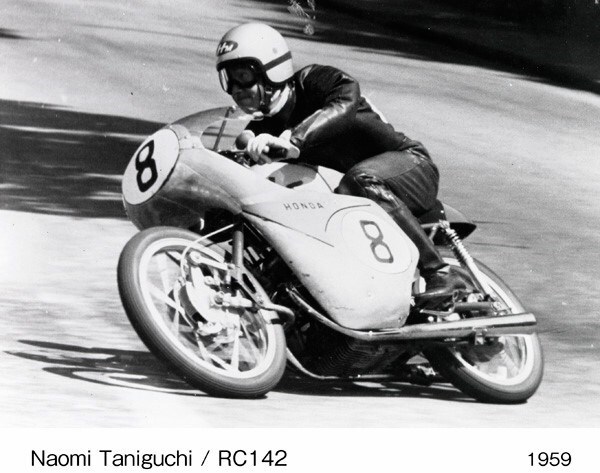
SYNONYMOUS WITH COMPETITION.
“The fighting spirit that is my nature will no longer continue to allow me to keep turning away. I have made the firm decision to enter the TT next year”, the most prestigious international race where Honda planned to face the leading manufacturers at the time. In 1954, Soichiro shared his dream with his team in a firm statement of intent. This mission would take five years to materialise. So, in 1959, in Honda’s first appearance at the prestigious TT, Honda’s riders crossed the finishing line in sixth, seventh, eighth and tenth place on the Honda RC142.
These results earned Honda the Manufacturers Prize but Soichiro Honda’s ambition meant he would pursue a single objective: victory. This first competition was the first step on his road to success. Only two years later in 1961, Honda won its first two international titles in the 125cc and 250cc classes. Since then, Honda has competed at the highest global level on two wheels.
ON TO FOUR WHEELS
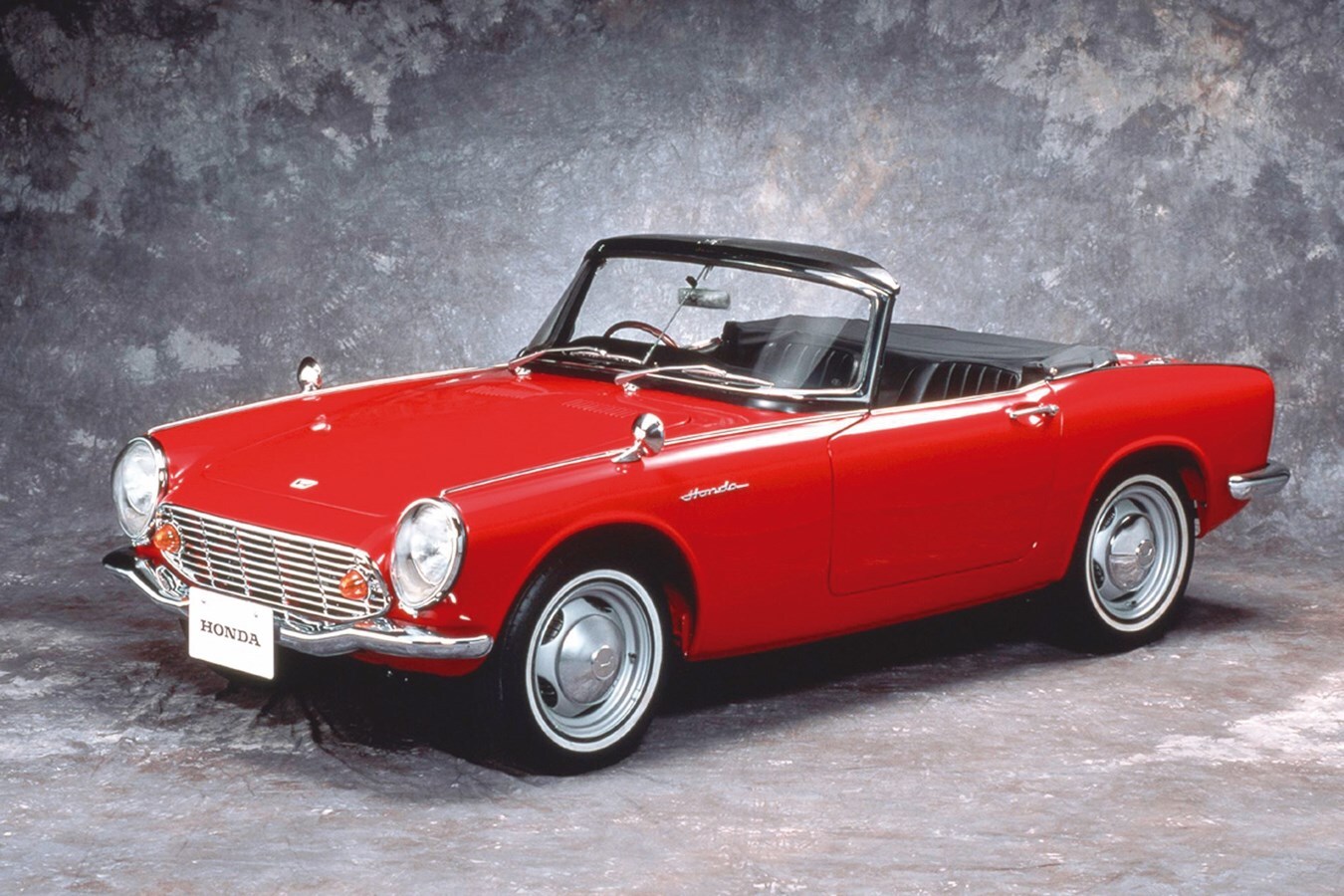
THE SPIRIT OF IMPROVEMENT.
In 1958 Honda decided to manufacture cars. The new decade offered an odyssey for Honda to become a fully-fledged member of the Japanese automotive industry.
Development of the first prototypes was in full swing when in 1961, the Japanese Ministry of International Trade and Industry (MITI) announced a law promoting specific industries, which included the automotive industry, and once approved, it would prevent new manufacturers from joining the national market. To avoid being affected by this law, Honda developed the S360 and S500 mini sports cars and the T360 mini truck, which was unveiled at the Tokyo Motor Show in 1962. In the end, the MITI law was never approved but Honda had already taken a new step and fully immersed itself in manufacturing cars.
A CIRCUIT TO MAKE HISTORY.
Officially called the Suzuka International Racing Course, it was built in 1962 as a Honda test track. It was originally designed by Dutch designer John Hugenholtz, who was also responsible for the Jarama circuit in Madrid. It is the oldest circuit in Japan and one of the few in the world to have a track in the shape of a figure 8. Only a year after its construction, Honda began its first foray in Formula 1.
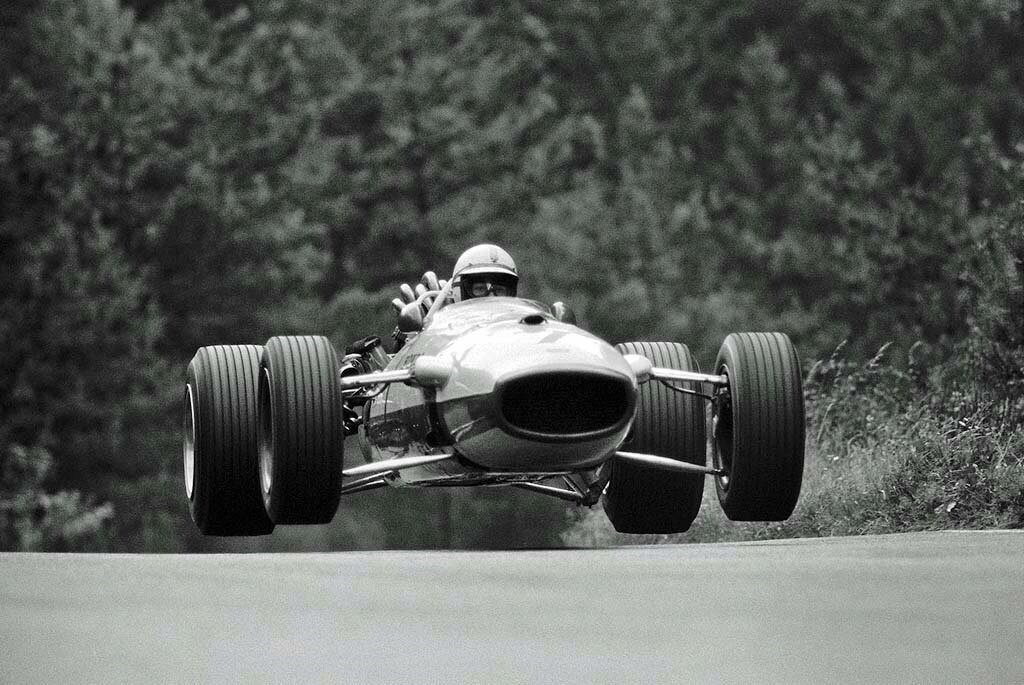
LONG LIVE MEXICO!
In 1960, when Soichiro Honda decided to enter into competition, Honda was still the newest manufacturer in Japan and the first to venture into Formula 1. Winning a competition with a racing car he had produced was one of the founder’s many childhood dreams and the first step towards achieving that was the RA271. After extensive training on the Suzuka (Japan) and Zandvoort (the Netherlands) tracks, the team finally made its debut with the RA271 at the 1964 German GP at the Nürburgring, the most challenging circuit on the calendar. Painted ivory with a big red dot, symbolising the sun on Japan’s national flag, the single-seater made automotive history. Honda was rewarded very quickly for the decision to build the chassis and engine in-house, and in 1965 Richie Ginther secured Honda’s first F1 win in Mexico. Honda was the first Japanese manufacturer to win a F1 Grand Prix and all signs pointed to a rapid rise to success. However, following the tragic loss of Jo Schlesser in 1968 at the wheel of the RA302, Honda withdrew from F1 until the 1980s.

KEI CARS.
In 1963, Honda launched a high-impact mass campaign offering prizes for those who guessed the price of the new Honda S500 model. The company received over 5.7 million responses – a record for an advert of that kind. In August that year, Honda launched the T360 mini truck, followed by the S500 in October. The Honda N360, launched in 1966 in the midst of the motoring boom in Japan, was the company’s first mini car (Kei car) to be mass produced. Mini vehicles were already popular in Japan but in typical Honda style, Honda burst onto the market making a lot of noise.
The N360 was also the first mini car offering an optional Honda automatic transmission for the first time: the Hondamatic. The N360 fully exploited the mechanical and size limitations established by law for mini vehicles: 600cc displacement, the maximum 3.4 metres long, 2 metres high and 1.48 metres wide. Honda’s engineers managed to offer power similar to a sports car, a surprisingly spacious interior and all at a much cheaper price than its competitors. The N360 embodied the corporate values that best expressed the Honda philosophy: “Man Maximum, Machine Minimum”.
DESTINATION HAWAII.
In 1969, just a few months before Neil Armstrong stepped foot on the moon, the iconic Honda N600, a more powerful variant of the N360, became the company’s first car on sale in the US. Launched in Hawaii, Honda America began to sell the car on the continent through the dealer network that Honda had already created for its motorcycles. That was when Honda’s battle to find a gap in the American automotive market began. Selling cars at motorcycle dealerships was an unusual idea but Honda could not create a network specifically for cars until the arrival of the Civic in 1972.
FROM JAPAN TO THE WORLD
THE AMERICAN DREAM.
In winter 1952, Soichiro made a drastic decision that would shape the future of the company: he set off for the US. His aim was to invest 100% of the latest capital increase in importing machines and tools to produce high-quality parts on a par with his ideas.
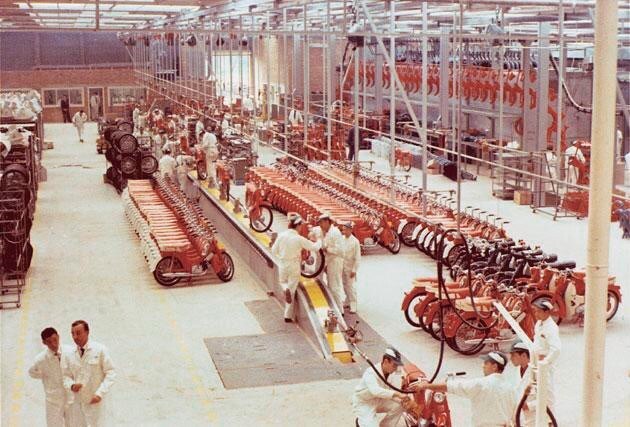
COMING TO EUROPE.
In 1962, Honda built its first factory outside Japan, in Belgium. It was inaugurated the following year with Soichiro Honda himself as the master of ceremonies. Honda Motor Co. was only 15 years old and was already a global company. In 1969, Honda took an important step forward as a producer of big bikes when it started to sell the CB750 Four. Considered the most sophisticated motorcycle in history in its day, it was the first to be mass produced and equipped with a disc brake and electronic ignition. Its level of performance, handling and manufacturing quality are some of the attributes that earned it the title of first superbike in history and quickly made it an unprecedented bestseller for a big bike.
A LEGEND IS BORN.
In the 70s, environmental awareness was growing and in the United States, laws on pollutant emissions were tightening to improve air quality. It was in this context that Honda took a step that forged the brand’s philosophy.
Honda was still a relatively small company but it was one of the first to position itself alongside public institutions and citizens in the fight against pollution. Equipped with the first engine with CVCC technology, the Civic arrived with a very green mission: to show the automotive industry that not only was it possible to meet the strict regulations imposed by the US Environmental Protection Agency, but that it was also very necessary to raise standards in the sector.
The Civic was a huge success in terms of sales and received multiple awards. In Japan, it was the first model to win Car of the Year three years running: 1972, 1973 and 1974. But its popularity was not limited to its homeland. In Canada, for example, it was the most-imported car for 28 months in a row between 1976 and 1978.

AN UNEXPECTED GOODBYE.
In October 1973, coinciding with Honda’s 25th anniversary and the promising signs that came with the Civic, the two founding partners, Soichiro Honda and Takeo Fujisawa, retired at the same time. Taking on their new lifelong positions as "Supreme Advisors", a new managerial era began that would test the company’s strength. This step marked the end of a highly strategic process that had begun three years earlier with the creation of the “collective leadership”, a group of four senior managing directors who would lead the transition.
TOWARDS THE GLOBAL DREAM.
“If you’re not number one in the world, you can’t be number one in Japan”. When Soichiro made the decision to take a gamble and import tools in bulk, he understood the logic of the international market, which was in a state of continuous globalisation. More than two decades later, in February 1978, Honda of America Manufacturing (HAM) was established in Ohio in the US, with the construction of a motorcycle production plant as the main objective.
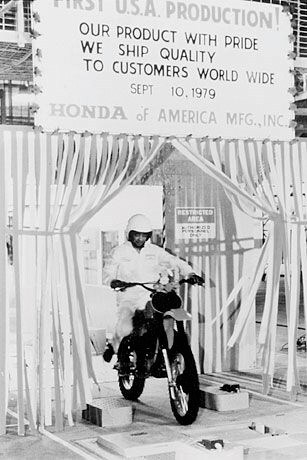
A year and a half later, the CR250R would leave the production line as the first motorcycle manufactured by Honda in the United States. Shortly after, the company embarked on building a car production plant and reached a new milestone in the company’s global expansion in 1982 with the new Accord, the first Japanese car to be produced in the US.
PIONEERS OF INNOVATION
ON THE MAP.
After the success of the Civic, the public demanded a bigger Honda. In 1976, the Honda Accord arrived, shaking up the automotive industry with a new car concept: affordable, sporty and efficient. In addition to this, the Accord incorporated what is considered the first integrated navigation system in a car. The Electro Gyro-Cator used a helium-powered gyroscope and servo gear to determine the point at which the vehicle was located and at what speed it had travelled. The screen was similar to a submarine radar system, with a transparent map where the route points were shown. Although not fully aware of it, in 1981 Honda invented the first map-based vehicle navigation system, long before the appearance of GPS satellite navigation systems.
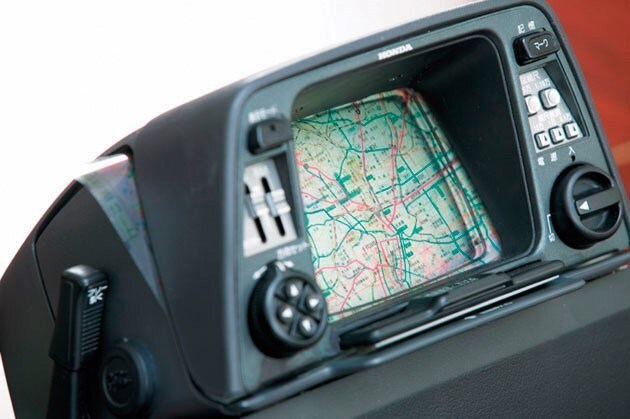
BACK ON COURSE TO VICTORY.
Honda’s long-awaited return to competition materialised in 1983, this time as engine supplier for the following teams: Spirit, Williams, Lotus, McLaren and Tyrrell. It was a golden era, with six consecutive constructors’ titles with both Williams (1986 and 1987) and McLaren (from 1988 to 1991), as well as five drivers’ titles with Nelson Piquet (1987), Ayrton Senna (1988, 1990 and 1991) and Alain Prost (1989). In 1988, the McLaren-Honda single-seaters won 15 out of 16 races – a F1 season had never been dominated like that before. Honda won the Constructors’ Championship, Ayrton Senna was declared World Champion and his teammate Alain Prost runner-up.

THE 80s: UNPRECEDENTED INGENUITY AND TECHNOLOGICAL CREATIVITY.
During this decade, Honda strengthened its leadership as a big bike producer. Highlights with a “V” configuration include 4-cylinder engines like the VF750F, a model that gave way to the VFR750 (1986), and the VFR750R, the legendary RC30 that incorporated technological innovations like the single-sided swingarm and the titanium connecting rods. Honda surprised the world with the CX500 Turbo (1981), a turbocharged V-twin model equipped with electronic fuel injection. In the trail segment, the astonishing XLV750R burst onto the market in 1983, giving way to the XRV650 in 1988, the first model in the popular Africa Twin series.
With regard to inline models, the legacy of the iconic CB750 Four and the spectacular 6-cylinder CBX1000 evolved into the legendary CBR acronym, with which Honda revolutionised its sports bike range with 600, 400 and 250cc displacements and which would form the basis of another particularly significant model, the CBR900RR from 1992. Honda also continued to develop models with horizontally opposed cylinder engines in the Gold Wing range, a model that was changed from four to six cylinders in the late 80s. Alongside all these creations and praised for its Grand Prix success, Honda launched a series of two-stroke models in the NS range, with 250cc and 400cc displacements, which would result in the NSR250 in 1986, a cult model that marked a motorcycling era.
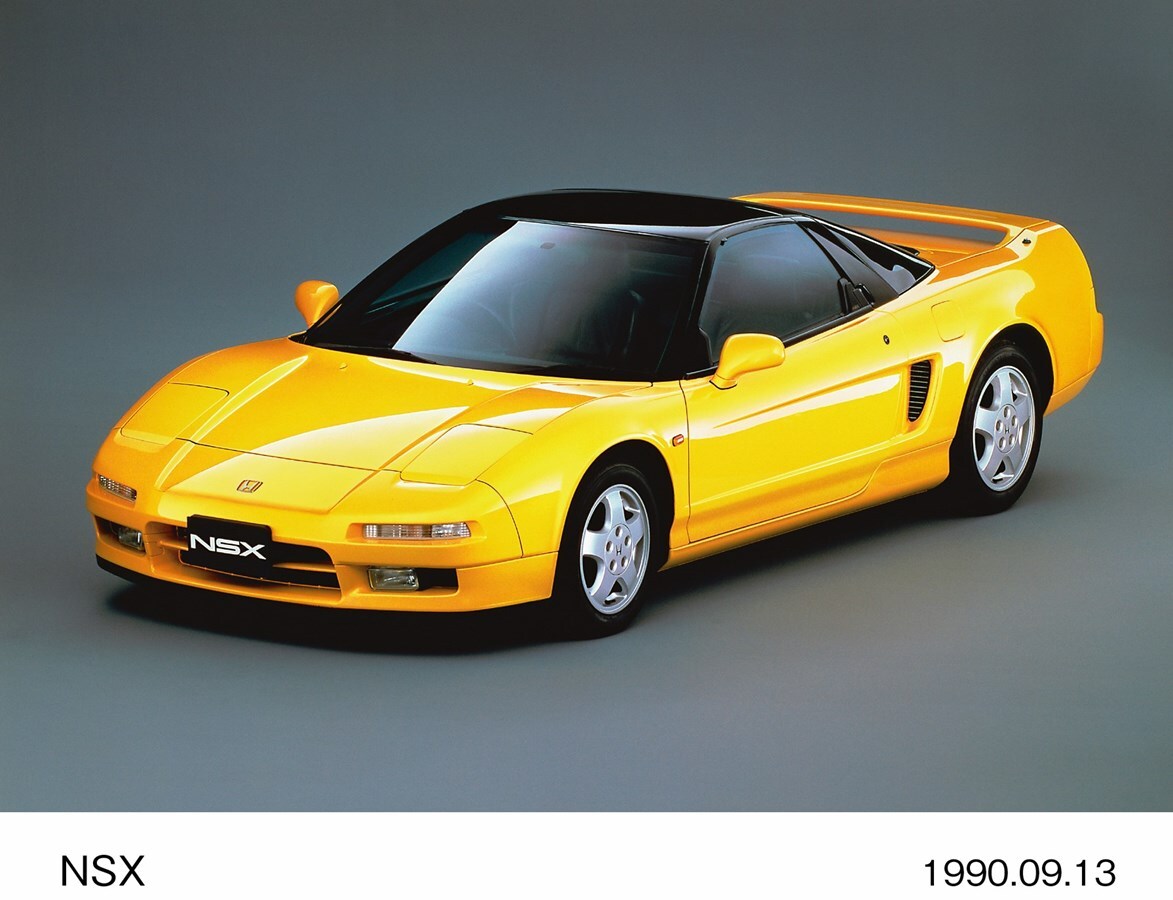
THE MODEL THAT DEFINED ITS GENERATION.
Encouraged by its sporting success, in 1986 the Japanese manufacturer launched its first luxury car, the Honda Legend, and a new brand for the United States to sell it: Acura. As such, Honda became the first Japanese car manufacturer to launch an independent premium division.
In February 1989, Honda unveiled the NSX - a supercar that defied the competition and shook the foundations of the sector with its own technology and design, exclusive innovations and the famous aluminium monocoque chassis. The result: a car inspired by F1 solutions.
The NSX became a technological archetype and was the first Japanese supercar on the global market. It could reach 100 kmh in 5.7 seconds and a top speed of 259 kmh. The NSX was the embodiment of Honda’s sporting success. In fact, legendary driver Ayrton Senna was personally involved in its development and it was he who unveiled it alongside Alain Prost at the 1989 Geneva Motor Show.
FAREWELL TO A GENIUS.
On 5 August 1991, Soichiro bid farewell to this world at the age of 84. More than 62,000 people paid tribute to the Japanese engineer at a public ceremony in Tokyo that lasted three days without causing traffic jams. The Honda founder had joked about this: “After living my life as a car manufacturer, how can I cause a traffic jam on the day of my funeral?”
In 1992, a year after Soichiro Honda’s death, the brand revolutionised the two-wheel sector with the launch of the legendary NR750, a motorcycle with countless cutting-edge technological solutions that had never before been put into practice in a standard production model. Highlights included a V4 engine with oval pistons and 8 valves per cylinder, which could produce 125 hp at 14000 rpm. With the NR750, Honda once again showed the world the immense technological capabilities it had achieved as a manufacturer.
INNOVATING ON ALL FRONTS
THE POWER OF DREAMS.
1989 saw the release of the new Honda Integra, equipped with the first DOHC VTEC engine. The legendary VTEC engine, which gave rise to the slogan “The Power of Dreams”, was admired for being the first technology to offer a four-valve mechanism to adjust the opening time and lift. This means that in a situation that requires high performance, the valves open more and for longer. Currently, all Honda petrol-driven cars, as well as motorcycles and marine engines contain one of the various versions of the VTEC.
BEYOND PETROL.
Honda’s spirit of competition drove the company to become one of the first car manufacturers to take part in the World Solar Challenge, the well-known Australian competition open exclusively to solar-powered racing cars. To this end, the company designed the Honda Dream, and later the Honda Dream II, built from lightweight carbon fibre-reinforced plastic and covered in solar cells. The blue, bullet-shaped model beat records in competitions and notched up a string of victories between 1993 and 1996.
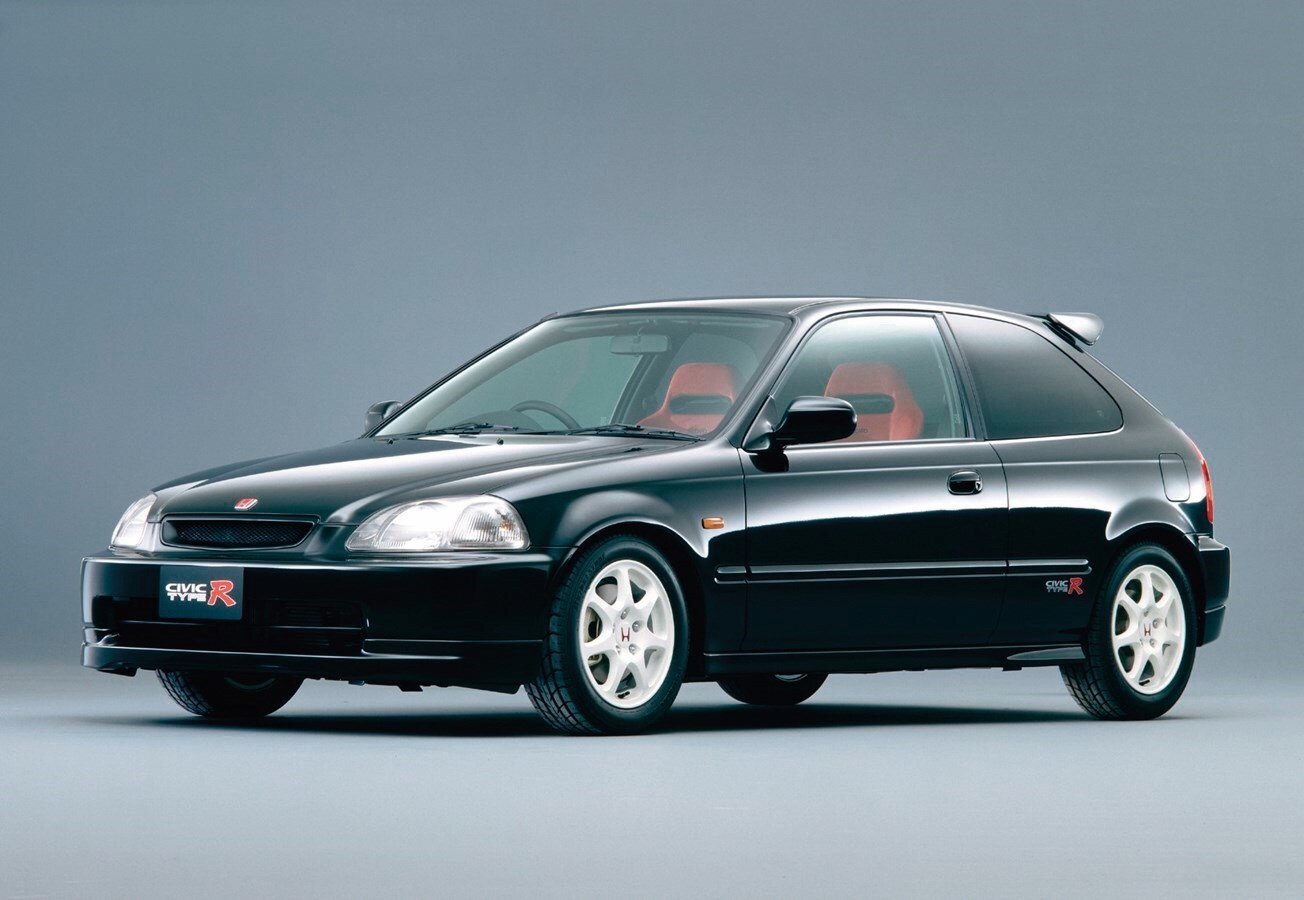
TYPE R CERTIFICATE OF ORIGIN.
The arrival of the 90s coincided with the sixth generation of the Honda Civic. Although, unlike the rest, the sixth generation was the first to be named Type R (for Racing). To date, only pure sports models, like the NSX, have been given this name.
To deserve this label, the vehicle had to meet precise criteria: it had to provide a stimulating drive, the driver had to feel involved and it had to be fast, but other aspects also had to be competitive, like the gearbox, the braking system and the steering. Superfluous accessories and soundproofing were not accepted as they could ruin the driver experience.
HONDA FOR THE WHOLE FAMILY.
The legendary Twin Ring Motegi circuit, built by Honda in 1997 two hours from Tokyo, is well known by Formula 1 and MotoGP racing fans. But not many people know that the Honda circuit is not just a pilgrimage destination for motor racing fans but it is also a theme park immersed in nature with a lot of appeal for families. The circuit is surrounded by woodland, which forms part of the facilities, but the main feature that attracts visitors from all over the world is the Honda Collection Hall: three floors of dreams, history and more than 350 legendary Honda models.
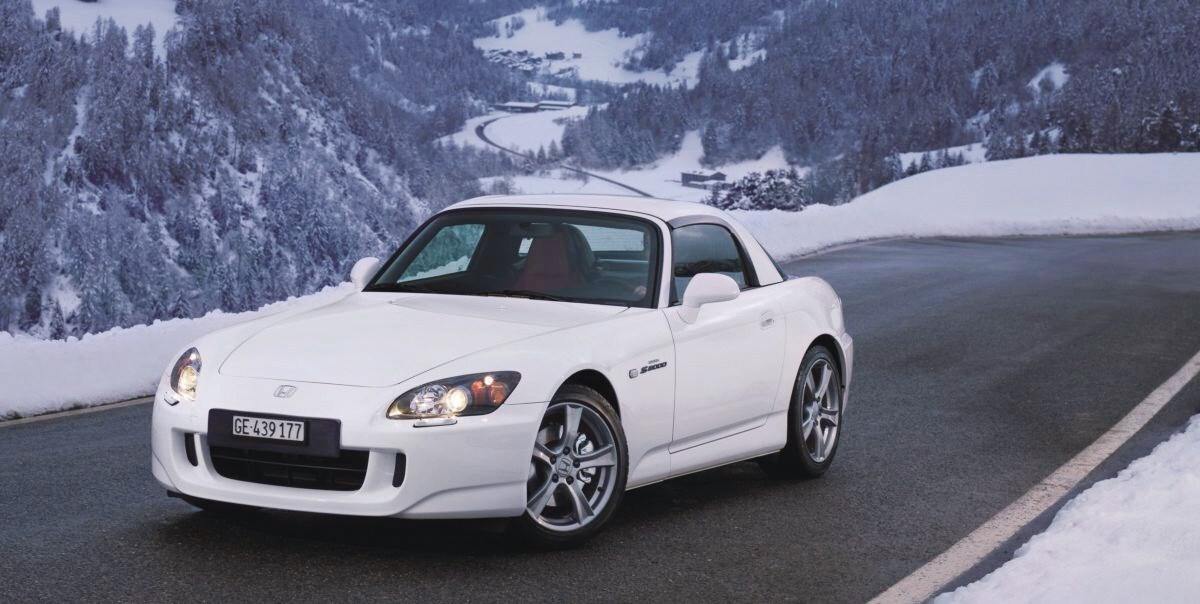
CELEBRATING ITS 50TH ANNIVERSARY.
To commemorate half a century, Honda made its own birthday present: the Honda S2000, reinvigorating the sporty spirit of the S500. Heir to the line of light roadsters – which started with the S500, S600 and S800 – the S2000 won over hearts even before it existed, when Honda presented the first concept at the 1995 Tokyo Motor Show under the name Sports Study Model.
The declarations of admiration were not surprising: the astonishing model had been designed in collaboration with Pininfarina and featured a naturally aspirated, high revving engine for the ultimate in driver engagement.
THE CUTTING-EDGE HYBRID.
Launched in 1999, the Honda Insight was the first hybrid on sale in the US and Europe. The ultralight, aerodynamic bodywork was a big innovation but even more important was the drivetrain. The Insight was also the pioneer of the IMA (Integrated Motor Assist) system, which was incorporated in all the brand’s hybrid models for many years. The IMA technology was based on a parallel hybrid system, whose mechanical simplicity and lightness enabled efficiency that was superior to that of other alternative hybrids.
BEYOND TYRES
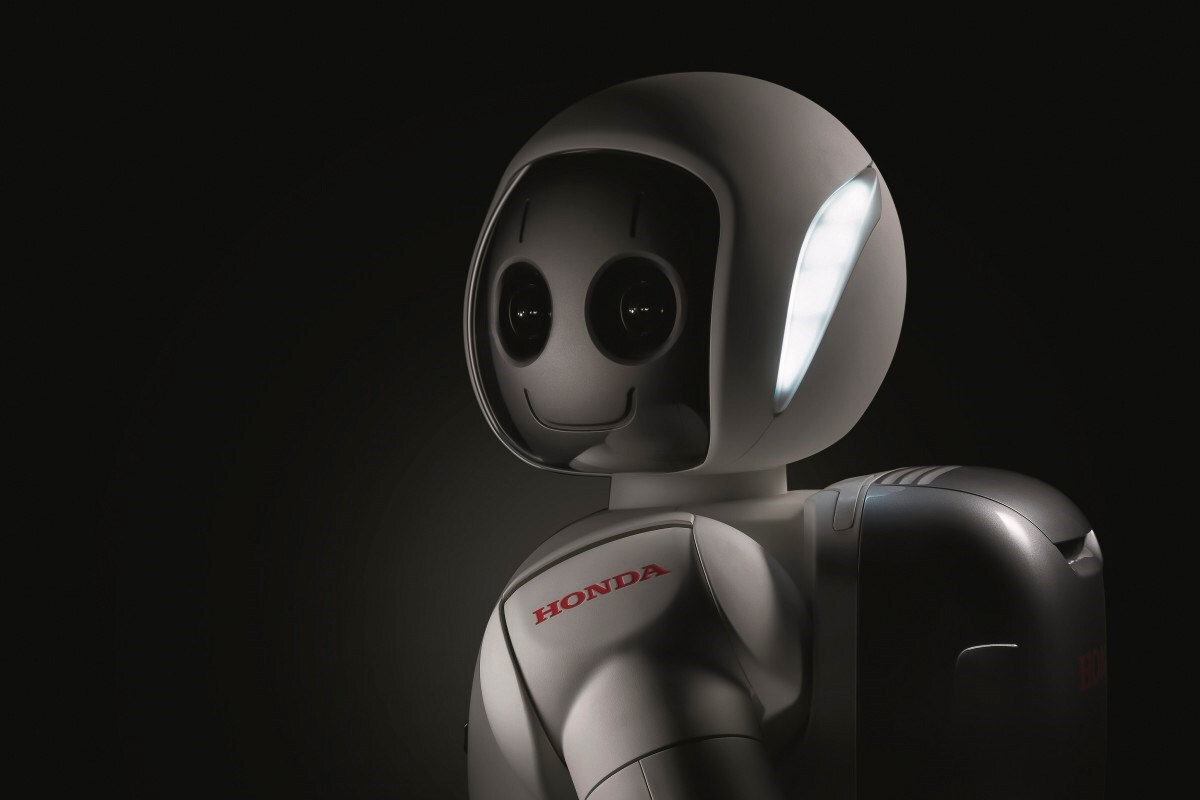
A ROBOT AHEAD OF ITS TIME.
You could say that ASIMO was born in the 21st century. However, its origins date back to 1986, when the first Honda robots were legs that tried to simulate a human walking, to be able to develop systems to assist dependent people or replace humans in dangerous jobs. At the turn of the century, Honda surprised the world with a robot that was a fully-fledged technological revolution in the world of humanoid robotics and paved the way for the use of artificial intelligence in robotics. For the first time, a human-sized and shaped bipedal robot could keep its balance perfectly when walking and could even go up and down stairs.
ASIMO’s role as technological ambassador took it on visits to science and technology museums, institutions and schools throughout the world, encouraging students to study the sciences and imagine a future with robots.
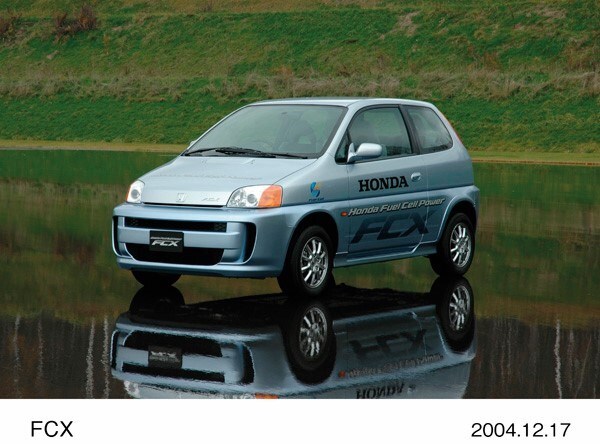
THE FUTURE, TODAY.
Honda had been developing an electric car with a hydrogen fuel cell since the '80s. Launched in 2002, the Honda FCX was the first zero-emission car on sale in the US and Japan. The latest iteration of this line of research is the Clarity Fuel Cell, which can offer the same performance as conventional vehicles. It was the first car to have the entire drive system, including the fuel cell, mounted under the bonnet.
2014 marked a milestone in F1 history when hybrid engines were introduced. Being pioneers of this technology, Honda’s passion for competition was reignited. After three years without positive results, Honda joined forces with Scuderia Toro Rosso and began testing the STR14 and RA618H engines with them.
In 2019, Red Bull Racing followed Toro Rosso and also opted for the Honda engines. Just two years later, in 2021, Dutch driver Max Verstappen was declared World Champion at the last race of the season.
CONQUERING THE SKIES.
Honda’s venture into aviation began in 1986 with the creation of a division dedicated exclusively to this field. It was led by young aeronautical engineer Michimasa Fujino, who moved to a research centre for advanced aeronautics in Starkville, Mississippi, along with a small team.
One night in early 1997, the future founder and CEO of Honda Aircraft had a bright idea. Half-asleep and with no paper to hand, Fujino ripped a sheet off a calendar and wrote his idea on the back. Fujino’s original design contains what might still be the most distinctive HondaJet innovation: the over-the-wing engine mount – a solution that made more space available in the cabin and reduced the noise caused by the engine vibrations. Tests continued and in July 2005, the HondaJet was unveiled for the first time in front of hundreds of thousands of spectators in an exhibition area in Oshkosh, Wisconsin.
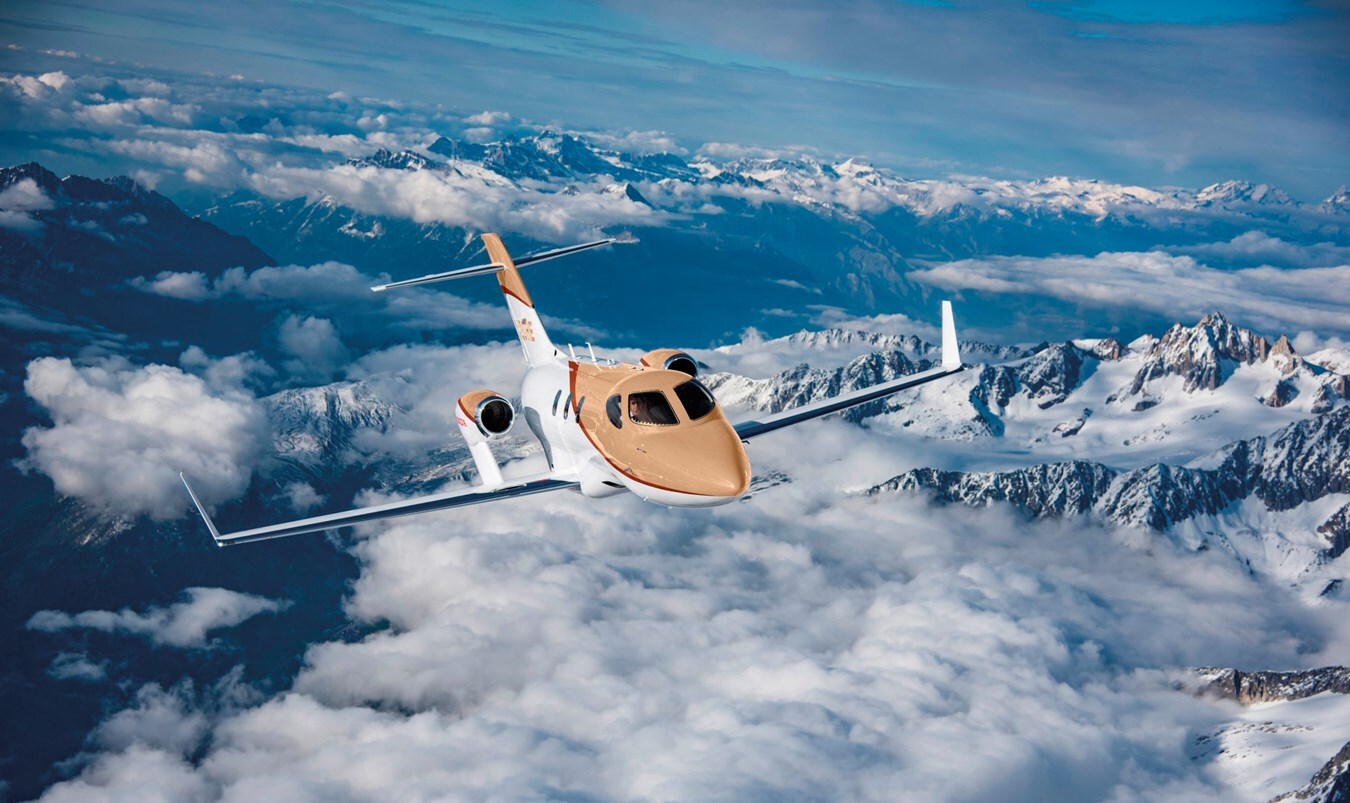
HONDA’S VISION.
Honda defined its electric future in 2021. More than an objective, it was a commitment to society, to the environment and to the company’s ethical values. Helping lay the foundation for this new vision, and paving the way for the electrification of its main European models, the Honda e was launched in 2020. The first all-electric Honda for this region, it was quickly followed by electrified versions of all existing models, completing with the launch of the new Civic e:HEV in 2022.
But the commitment does not stop there. Honda committed that 100% of its sales will be zero emissions by 2040, and all of its products and corporate activities carbon neutral by 2050. As a testament to this goal, in 2023 Honda launched three electrified models onto the European market.
NO LIMITS.
First land, then sea and air, and finally outer space. In 2021, a joint research project was announced between the Japan Aerospace Exploration Agency (JAXA) and Honda’s R&D division to study the feasibility of a circulative renewable energy system to facilitate human life in space. The idea is that this system designed by Honda would supply oxygen, hydrogen, fuel and electricity to space stations and rovers. How? Through a combination of a high-differential pressure water electrolysis system (which would produce oxygen and hydrogen using solar power) and a hydrogen cell system that would generate electricity and water.
HONDA BY NUMBERS
HONDA GROUP COMPANIES (FY 2023*)
companies: 313 subsidiaries + 69 affiliated companies
production plants worldwide
Japan: 9
North and South America: 10
US: 3
Brazil: 3
Canada: 1
Mexico: 1
Argentina: 1
Peru: 1
Europe: 3
France: 1
Italy: 1
Spain: 1
Africa: 4
Nigeria: 2
Kenya: 1
Ghana: 1
Asia-Oceania: 28
China: 9
Indonesia: 4
Thailand: 3
India: 3
Pakistan: 2
Philippines: 2
Vietnam: 2
Taiwan: 1
Bangladesh: 1
Australia: 1
R&D centres worldwide
Japan: 2
US: 4
Europe: 5
United Kingdom: 2
Germany: 2
Italy: 1
Asia-Oceania: 9
China: 3
Thailand: 3
Indonesia: 2
India: 1
Associates (FY 2023)
230,000 professionally linked
215,508 shareholders
CONSOLIDATED SALES (FY 2023)
28.08 billion (approx. 108 billion euro)
CONSOLIDATED OPERATING PROFIT (FY 2023)
839.3 billion yen (approx. 5.747 billion euro)
UNITS PRODUCED ANNUALLY (FY 2023)
18.75 million motorcycles
3.68 million cars
5.64 million power products
SUSTAINABILITY:
Reduction in global CO2 emissions: FY 2020–FY 2023: -24.1%
Reduction in the intensity of CO2 emissions from product use:
Motorcycles - FY 2020–FY 2023: -30.4 %
Cars - FY 2020–FY 2023: -27.2 %
Power products - FY 2020–FY 2023: -28.2 %
Reduction in energy consumption: FY 2019–FY 2023: -14.3 %
Reduction in water consumption: FY 2019–FY 2023: -8.3 %
Reduction in waste generated: FY 2019–FY 2023: -16 %
S&P Global’s Sustainability Yearbook of the most sustainable companies (2023): In the top 10% in the world with 79/100 points
Number 26 in the Interbrand Best Global Brands 2022 rankings.
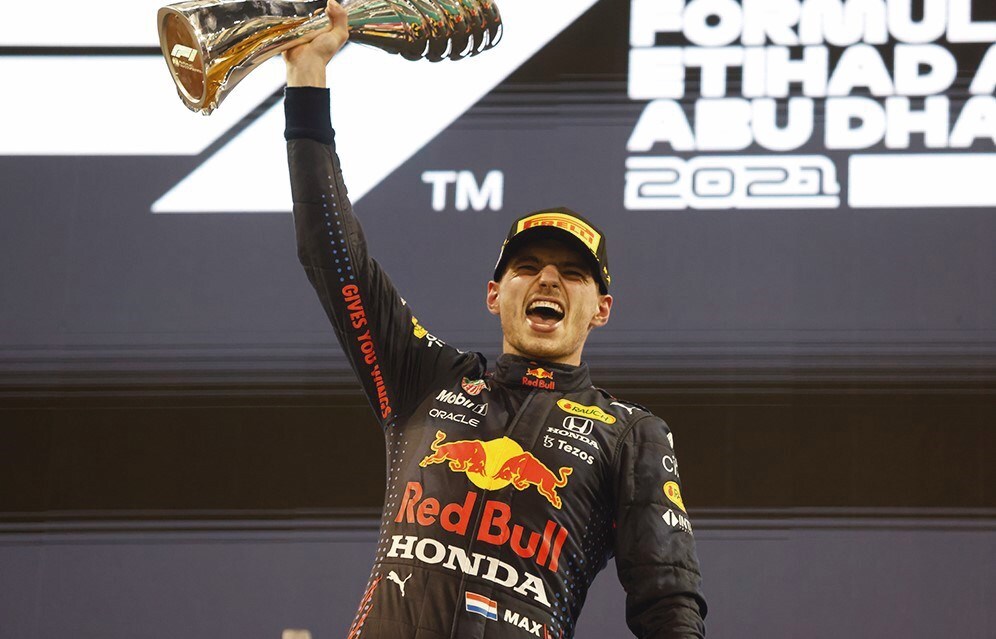
COMPETITION:
Cars (Formula 1) - 13 world titles with Honda as engine supplier.
Drivers’: 7
Constructors’: 6
Motorcycles - Honda has notched up 200 world championships in the following disciplines:
Speed: 72 titles
MotoGP/500cc: 25
350cc: 6
250cc: 19
125cc/Moto3: 20
50cc: 2
Trial: (Montesa + Honda): 54
Outdoor: 26
Indoor: 20
Women’s: 8
Motocross: 31
MXGP/500cc: 17
MX2/250cc: 9
125cc: 3
MX3: 2
Enduro: 14
Men’s: 12
Women’s: 2
Superbike: 6
Supersport: 9
Resistance: 13
Raid Rally: 1
* FY – Financial Year. The end of Honda’s financial year is 31 March. FY 2023 corresponds to the financial year from 1 April 2022 to 31 March 2023.